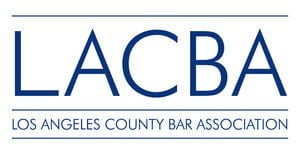Child Endangerment, Cal. 273a PC
California Penal Code section 273a makes it unlawful to endanger a child, which occurs when someone places a child (or allows a child to be placed) into a dangerous situation. A child need not have suffered an actual injury for someone to be charged and convicted of child endangerment

child endangerment 273a pc – long beach criminal defense attorney don hammond
Our society places a great emphasis on the protection of children, and as such, the crime of child endangerment carries stiff penalties. Child endangerment can be charged as a misdemeanor or a felony depending upon the circumstances and any prior criminal history of the defendant. Generally, if there was risk of death or great bodily harm to the child, then the offense will be charged as a felony.
California Penal Code section 273a criminalizes child endangerment, which occurs when someone places a child into a dangerous situation without providing adequate care or concern for the child’s health, safety, and/or well-being.
It is important to understand that a child need not have suffered an actual injury for someone to be charged and convicted of child endangerment. Also, a person who is responsible for a child who merely allows that child to be endangered – even if their actions did not directly endanger the child – can be convicted under this statute.
Elements of the crime of child endangerment
For the prosecution to obtain a successful conviction under 273a PC, one of the following elements must be proved beyond a reasonable doubt:
- The defendant willfully caused or permitted a child to suffer physical and/or mental harm, pain, and/or suffering.
- The defendant willfully caused or permitted a child to be placed into circumstances where physical and/or mental harm, pain, and/or suffering could or did occur.
In a legal context, “willful” means purposely and with intent. Under this statute, the prosecutor need not prove that the defendant intended harm to the child, but only that the defendant intended to place the child in such a situation. Such behavior is referred to as criminally negligent and is an action that goes beyond being merely contrary to common sense or even reckless.
To determine whether a defendant acted with criminal negligence, the court weighs the defendant’s actions against the likely actions of a reasonable person in a similar situation to determine whether the defendant demonstrated a blatant disregard for the health, safety, or well-being of the child. The court evaluates whether harm to the child was a foreseeable result of the defendant’s actions, or whether the defendant simply overlooked the risk of harm.
Situations that would fall under the scope of this law include leaving one’s child with a person who has a known history of abusive behavior, failing to obtain adequate medical care for a sick child, or leaving dangerous objects such as a loaded gun or dangerous drugs where children can access them.
Related offenses
There are several related offenses to child endangerment, a few of which are commonly charged in conjunction with 273a violations:
- Child abuse, 273d PC.
- Lewd acts with a minor, 288 PC.
- Driving under the influence or driving while intoxicated.
If a child dies, the following offenses are commonly charged in addition to child endangerment:
- Child abuse resulting in the death of a child under eight years of age, 273a(b).
- Murder, 187 PC.
- Involuntary manslaughter, 192(b) PC.
- Failure to provide care/child neglect, 270 PC.
Criminal penalties for child endangerment
Penal Code section 273a is a wobbler, which means it can be charged as a misdemeanor or a felony depending upon the circumstances and any prior criminal history of the defendant. Generally, if there was a risk of death or great bodily harm to the child, then the offense will be charged as a felony.
A defendant convicted of a misdemeanor charge can be sentenced to any or all of:
- Up to six months in county jail.
- A fine not to exceed $1,000.
- Probation for at least four years.
- Protective and/or temporary restraining orders.
- Completion of a child abuse treatment program for a minimum of one year.
- Alcohol or drug awareness training.
- Random drug testing.
For a felony conviction, the defendant can be sentenced to any or all of:
- Two to six years in state prison.
- A fine of up to $10,000.
- At least four years of probation.
- A strike under California’s Three Strikes Law
If the child actually suffered great bodily harm – meaning substantial or significant injuries – the defendant can be sentenced to an additional prison sentence of three to six years, to be served after the base sentence (consecutively).
If the child died as a result of the offense, the defendant can be sentenced to an additional and consecutive four years in state prison, and will likely also face more serious charges such as murder or manslaughter.
Legal defenses
Our society places a great emphasis on the protection of children, and as such, the crime of child endangerment carries stiff penalties. Anyone accused of this crime should seek legal advice that is appropriate for their unique circumstances, provided by a qualified criminal defense attorney. There are a few common legal defenses to a charge under this statute:
- The alleged endangerment was unintentional and the defendant’s behavior did not rise to the level necessary to qualify as willfulness.
- The defendant’s actions represent the reasonable use of discipline.
- False accusations.
- The defendant was neither the individual responsible for the child nor the one who put the child in danger.
Real Case Results
AUGUST 2023 TORRANCE COURTHOUSE: 🌟 Case Win! Mother reunited with her child! 👩🍼 CDH got a Mental Health Diversion (1001.36) granted for a young mother in a complicated child endangerment & domestic violence case, which will lead to the dismissal of that case and have a huge positive impact on that client’s family law and immigration law cases. (She’s a Canadian citizen.)










